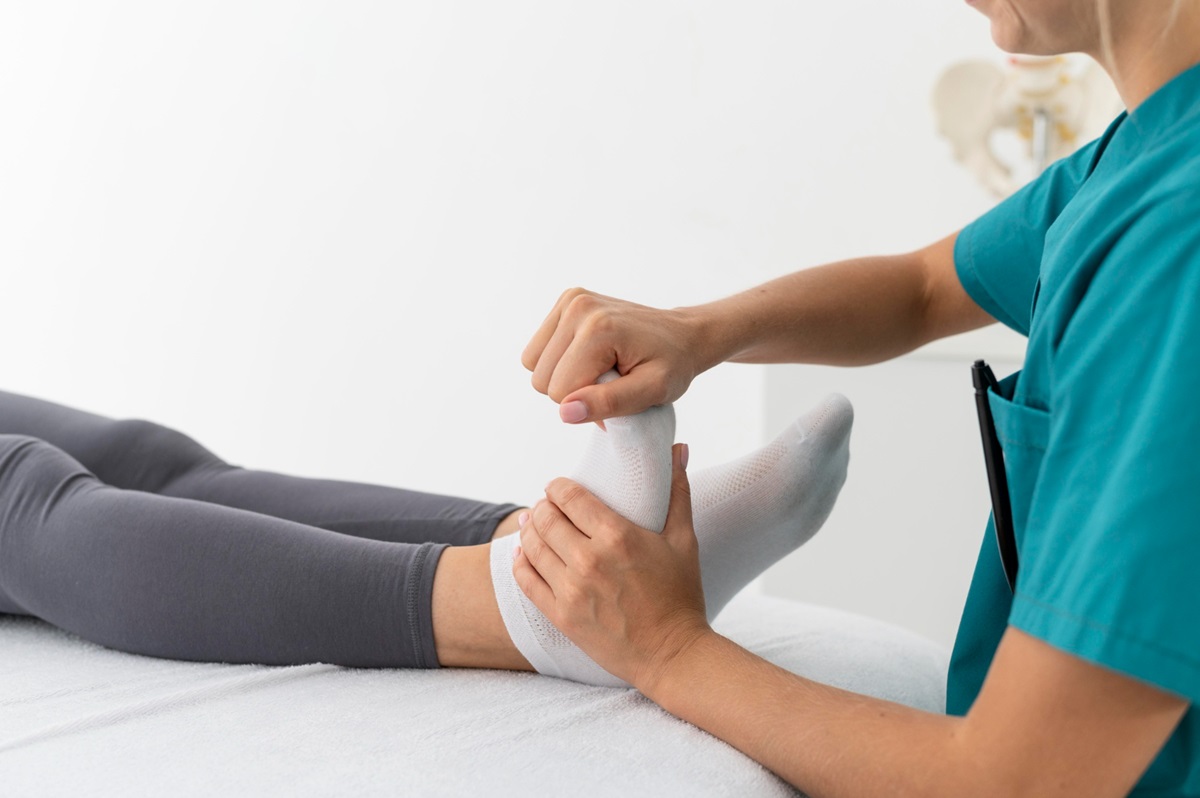Ankle sprains are one of the most common injuries—whether you're playing sports, hiking, or just walking on uneven ground. The right ankle sprain exercises can make all the difference in how well and how fast you recover. This guide covers essential movements and physical therapy strategies to help you regain full function, fast. Every step …
Ankle Sprain Exercises: Expert Physical Therapy for Recovery

Ankle sprains are one of the most common injuries—whether you’re playing sports, hiking, or just walking on uneven ground. The right ankle sprain exercises can make all the difference in how well and how fast you recover. This guide covers essential movements and physical therapy strategies to help you regain full function, fast. Every step in this process—from injury to full strength—can be guided by professionals at Sustain Physical Therapy & Performance.
Understanding the Importance of Early Ankle Sprain Exercises
Starting ankle sprain exercises early can help speed up recovery, reduce swelling, and prevent long-term instability. Controlled motion and progressive loading are key to healing tissues while keeping the joint functional. At Sustain PT & Performance, we prioritize active rehabilitation backed by science and physiotherapy supervision to ensure proper movement recovery.
Acute ankle sprains rank among the most frequent musculoskeletal injuries, especially in people who lead physically active lifestyles. Whether during sports, running, or everyday movement, the risk of rolling or twisting the ankle is significantly higher in these populations. Quick and effective ankle sprain exercises are essential to reduce downtime and support early recovery.
Functional rehab vs prolonged immobilization studies
Research shows that structured ankle exercises for sprain recovery outperform prolonged rest or immobilization. Functional rehab that includes range-of-motion and strength work leads to better outcomes than simply waiting for pain to fade. Ankle physical therapy focuses on restoring movement while supporting tissue healing, providing patients with exercise instructions and clear pain level monitoring.
Role of range‑of‑motion, strength, balance, and proprioception
Early focus on mobility and strength helps rebuild damaged ligaments and supporting structures. Proprioception—the sense of joint position—is often lost during injury. Targeted ankle sprain exercises like balance and control exercises, eyes closed balance, and single leg balance help restore stability and coordination in the affected leg.
Benefits of early P.O.L.I.C.E. protocol over R.I.C.E.
The P.O.L.I.C.E. method (Protection, Optimal Loading, Ice, Compression, Elevation) is more effective than R.I.C.E. because it emphasizes movement. Light loading and mobility work reduce stiffness and improve circulation. This approach is a core part of physical therapy for sprained ankle cases and supports quicker pain relief, better swelling control, and faster walking return.
Best Ankle Exercises for Sprain Stages
Recovery is not one-size-fits-all. Ankle sprain exercises should be tailored to each phase of healing. Sustain Physical Therapy & Performance uses a structured, phased program that guides clients through each step safely with support, clear repetitions, and general advice from a licensed physical therapist.
Acute phase (0–72 hours): ankle pumps, gentle ROM, alphabet tracing
In the first few days, swelling and pain control are priorities. Ankle pumps, gentle ankle circles, and tracing the alphabet with your toes promote fluid movement and prevent stiffness. These ankle exercises for sprain recovery are gentle but essential, and can be done with chair support to improve comfort on the injured leg.
Subacute phase: isometrics in dorsiflexion, plantar flexion, inversion, and eversion

As pain decreases, start isometric holds in multiple directions. Hold each position for 5–10 seconds to activate stabilizing muscles without causing further injury. Incorporate ankle dorsiflexion/plantar flexion and begin range of movement exercises under physiotherapy supervision to rebuild control and reduce pain.
Strengthening phase: Theraband resistance and seated calf raises
Introduce resistance with Theraband movements for ankle eversion, inversion, dorsiflexion, and plantar flexion. Seated calf raises rebuild calf strength, which supports ankle control. Incorporate heel raises, towel curls, and gastrocnemius-soleus complex stretches to improve muscle support and ankle mechanics.
Balance & proprioception: single-leg stance, balance board, Y-balance drills
Balancing drills improve ankle stability and help retrain proprioception. Start with standing on one foot and progress to using a foam pad or balance board. Eyes closed balance drills, golf ball rolls, and side-to-side knee swings target the plantar fascia and strengthen neural coordination between muscles and joints.
Advanced Ankle Sprain Exercises to Restore Function
Once baseline mobility and strength are restored, it’s time to challenge the ankle with more dynamic movement. Advanced ankle sprain exercises promote athletic readiness and real-world functionality. These include higher-level rehab exercises used in both sports and daily functional movement.
Multi-directional and dynamic control drills
These include diagonal lunges, cutting drills, and ladder steps. They mimic sports movements while reinforcing ankle stability. Dynamic ankle movements build on earlier rehabilitation exercises and prepare the affected leg for unpredictable motion and coordination.
Sport‑specific loading: plyometrics, lateral hops, BOSU lunges
Athletes benefit from exercises that mimic their sport. Lateral hops and plyometrics challenge explosive control, while BOSU lunges add instability to replicate gameplay conditions. A physical therapist may add heel cord stretch or calf stretch (seated, knee straight) to improve ankle flexibility before advanced drills.
Criteria for progression: pain thresholds, swelling control, functional benchmarks
You should only move forward when swelling is gone, pain is minimal, and function is improving. Sustain PT & Performance therapists use specific benchmarks before adding stress. An orthopaedic surgeon or GP may also be involved in follow-up care during more complex ankle sprain cases.
How Physical Therapy for Sprained Ankle Enhances Recovery
Rehabilitation is most effective when guided by professionals. Physical therapy for sprained ankle injuries focuses on healing, prevention, and performance. Sustain Physical Therapy & Performance offers expert-driven care with long-term results, precise rehab exercises, and ongoing support.
Thorough biomechanical assessment at Sustain PT & Performance
Our team begins with a full movement screen, joint testing, and gait analysis. This allows us to find compensations or lingering deficits that impact your ankle. We then select the right ankle sprain exercises, ankle alphabet drills, and mobility routines tailored to your pain level and movement goals.
Custom exercise prescription combining mobility, strength, balance
Each plan is tailored to your injury and your goals. You’ll follow a mix of strength training, mobility drills, and balance work. Physical therapy for ankle sprain includes hand towel stretches, repetitions with an exercise band, and guidance on ankle sprain exercises with a focus on progress and safety.
Hands‑on techniques: joint mobilizations, manual stabilizations
Therapists at Sustain PT & Performance also use manual techniques to support healing. These include soft tissue release, mobilizations to restore joint motion, and hands-on feedback to improve movement quality. Under physiotherapy supervision, even complex cases involving the Achilles tendon or chronic instability can improve significantly.
Why Choose Ankle Physical Therapy with Sustain PT & Performance

Sustain PT & Performance offers more than basic rehab. We deliver expert physical therapy for sprained ankle injuries and long-term performance care. Whether you’re recovering from a mild twist or a recurring injury, we guide you every step with clear exercise instructions and consistent support.
Clinic-based and remote programming with PT oversight
Whether you’re local to our Boston clinic or working remotely, you’ll receive a plan that fits your life. Our PTs provide feedback through video, calls, or in-person visits. Follow-up care ensures that your ankle sprain exercises evolve as your pain decreases and range of movement improves.
Progress tracking via app‑based check‑ins and exercise guidance
Every client receives app-based exercise videos and tracking tools. You can log progress, adjust intensity, and get updated routines. Our platform helps you stay accountable with your ankle exercises for sprain rehab, whether you’re focusing on walking improvements or regaining sport-specific coordination.
Evidence-based protocols and phased progression for safe return
We follow research-supported progressions that prioritize safety. This keeps recovery smooth and reduces risk of re-injury. Each phase of ankle sprain exercises builds toward confident, pain-free movement with expert oversight and physiotherapy supervision.
Preventing Future Sprains Through Structured Maintenance
Once you’re pain-free, maintenance work keeps you that way. A structured plan prevents future injuries and ensures you stay strong. Ankle physical therapy doesn’t stop after the pain ends—it helps you build long-term resilience with a personalized maintenance program.
Repeat ankle sprains often result from a mix of factors, and experiencing a first-time sprain significantly increases the risk of future injuries. Research shows that up to 61% of individuals who suffer an initial ankle sprain may experience another. This highlights the importance of structured ankle physical therapy and ongoing rehabilitation to restore full function and prevent recurrence.
Ongoing proprioceptive training and strength maintenance
Continue balance work like single-leg stance drills, wobble board exercises, and movement variations. These ankle sprain exercises keep your joint prepared for unpredictable movements. Exercises like towel curls and heel raises reinforce foundational stability in the affected leg.
Load management and proper warm-up routines
Avoid overuse by managing workout intensity and allowing for recovery days. Warm-up with dynamic ankle drills and mobility work before sports or running. Incorporating golf ball roll, plantar fascia release, and dynamic calf stretches improves blood flow and tissue readiness.
Use of bracing or supportive gear during high-risk activities
Bracing or taping may help during return to sport or high-risk activities. Supportive shoes and proper terrain awareness also matter. Your PT will help determine what gear is appropriate for your ankle and when to apply additional support strategies for the injured leg.
Get Started with Ankle Sprain Rehab at Sustain PT & Performance
Don’t wait to feel better—start recovering now. Whether you’re limping after a minor twist or coming off crutches, the right ankle sprain exercises can speed your return. Request an appointment with Sustain Physical Therapy & Performance and begin your personalized plan today with professional treatment.
Conclusion
Ankle sprain exercises are a vital part of recovery. From early motion to advanced strength and balance work, they rebuild your ankle and prevent repeat injuries. With expert support from Sustain Physical Therapy & Performance, you’ll get back to moving with confidence.
FAQs
Is it good to exercise a sprained ankle?
Yes—gentle and progressive ankle sprain exercises promote healing and prevent stiffness. Start with low-load movement and follow your physical therapist’s guidance. Always ensure you’re working under physiotherapy supervision, especially in the early stages.
What’s the best exercise for a sprained ankle?
It depends on the phase of healing, but ankle pumps, balance drills, and resistance band work are commonly used. A PT can select the safest ankle exercises for sprain recovery based on your condition. Exercises like the ankle alphabet and towel curls are great early options.
Can you heal an ankle sprain with exercises?
Yes, targeted ankle exercises for sprain recovery can restore mobility, strength, and stability. When paired with professional physical therapy for sprained ankle injuries, they offer excellent outcomes. Rehabilitation exercises improve coordination, reduce swelling, and support a full return to movement.
Dr. Adam Babcock PT, DPT
“We Help Active Adults Quickly Recover From Pain Or Injury So They Can Stay Active, Get Back To What They Love To Do, and Do It For Decades”






